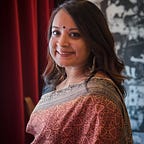Making Food Access Betr for All
I recently joined a wellness program through my health insurance. It’s called Betr Health and its focus is to improve gut health by removing all the toxins we consume, namely processed foods such as sugars, corn starch, and even white iodized salt. It involves eating a strict diet for 4–6 weeks of unprocessed vegetables, fruits, and protein and then slowly re-introducing foods into the system to see if they cause any inflammation or other symptoms. I can talk about this program ad nauseam — it has both disrupted and benefitted my life over the past three weeks.
While I don’t eat Indian food on a regular basis (aside from my favorite condiment on the entire planet — achaar), it is a part of my diet and something I turn to especially when I am trying to eat healthier. However, this nutrition plan has made that a bit difficult, because even though I can make pretty much all the sabzis (vegetable dishes) that I want and don’t have restrictions on masala, I am not permitted any bread or rice. I have come to realize, even though it has been in my face for the entire 46 years of my existence, that bread and rice are essential staples of the Indian diet. (I have substituted the rice with quinoa, but that can get boring. Chole on leafy greens is out of the question.)
The coaches of this diet plan make the [mostly valid] case that our ancestors were eating this way — they did not pollute their bodies with processed foods. However, my ancestors were probably eating bread and rice for hundreds of years. The bread and rice one hundred years ago in India just weren’t processed with preservatives, bleach, and other foreign additives that now wreak havoc on our bodies. In addition to the processed part, both wheat flour and white rice are high in starch and can impact blood sugar.
This whole scenario got me thinking about cultural inclusivity with not only wellness programs like this one, but also other food access and food security programs that were especially prevalent during the COVID-19 crisis. To be fair, the purveyors of this program are trying to some degree to be culturally inclusive, at least to my (Indian) people. Some of the meals that you can order through their plan are desi, such as curry chicken and channa masala. And, my coach happens to even have a close relative who is Indian and was able to offer me tips. But, it is really hard, weird, and frankly unappetizing, as I said earlier, to have some of these North Indian cooked veggies on a bed of leafy greens.
During COVID, a similar challenge emerged — with much more potentially dire consequences because families were relying on food assistance to get by and feed their families. Many of the food access/distribution programs were not supplying culturally relevant foods to diverse communities, such as the South Asian community. Again, there was an attempt occasionally, but the Asian foods were often focused on East Asian cuisine that contained ingredients either unfamiliar to the South Asia diet or restricted, such as fish sauce. When I was the Executive Director of a South Asian social services organization, we partnered with a food access program that works with local Asian farmers to distribute culturally appropriate produce to Asian families. Fortunately, as part of our partnership, we were able to select which vegetables would be included in our produce bags. However, once — and I don’t recall how this happened — bok choy was included in the bags. I love bok choy, and even my Indian mother who has never cooked with bok choy but has lived in the US for nearly 45 years, would probably find a way to make use of it. But, our clients were low-income immigrants — often newer immigrants and were not seeking “adventurous” dining experiences. They needed sustenance and they needed familiarity, especially during those stressful months of the pandemic. One of the aunties, upon receiving the bok choy, actually returned it to us saying she didn’t know what it was.
Los Angeles is one of the most diverse cities in this country, with a government that is at least partially aware and proactive in being inclusive. So if this exclusion happened here, it was undoubtedly even worse in other parts of the U.S. I can’t imagine how many families had to make do with whatever unfamiliar ingredients they could piece together — but, unfortunately, that has always been the immigrant and minority way. It is also a reminder of why it is vital to have people in decision-making power who are representative of and responsive to diverse communities.
